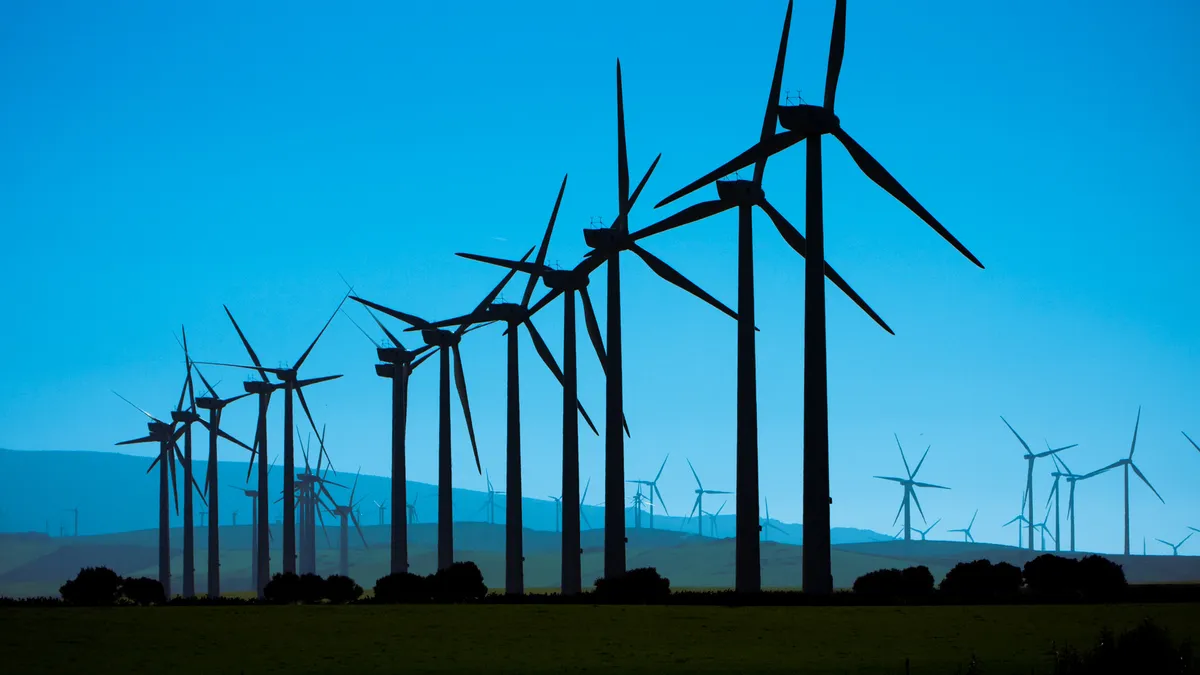Dive Brief:
- Heading into spring, the Electric Reliability Council of Texas says it has more than 82,000 MW of generation resources available to serve the expected peak demand of approximately 58,000 MW during the mild shoulder season.
- Even under the most trying circumstances, the grid operator for most of Texas says it will be able to maintain reliability. Part of that is due to substantial wind energy buildout: Recharge News reports ERCOT wind capacity could exceed 28 GW within three years.
- Summer demand is rising, however. A preliminary assessment predicts peak load of nearly 73,000 MW, about 2.6% higher than ERCOT’s all-time peak demand record of 71,110 MW.
Dive Insight:
Wind energy is increasingly integral to meeting Texas electrical demand. While there have been hiccups in the design of organized markets, the grid operator says it is well prepared so far. In the finalized Seasonal Assessment of Resource Adequacy (SARA) for spring and preliminary summer outlook, ERCOT officials say they anticipate there will be sufficient generation to meet projected peak demand.
"In preparing our seasonal forecasts, we studied multiple scenarios to test the ERCOT system," Senior Director of System Planning Warren Lasher said in a statement. "Under the most extreme scenarios considered, there were adequate generation reserves to maintain reliability."
ERCOT expects peak demand this spring will be in late May, alongside the planned completion of seasonal power plant maintenance outages. And in the time since the preliminary SARA was released, there has been a spike of gas, solar and wind generation coming online to the tune of 1,500 MW. An additional 4,000 MW is expected to be available at the start of the summer season.
But fuel-free wind generation has also been pressuring some gas plants, cutting revenues because renewable power is dispatched first and reduces energy prices.
ERCOT noted that as wind generation plays a larger role in its mix, its summer assessment includes scenarios that combine the forecasted peak load with low wind output. The report's low-wind output level represents only 3.8% of the total installed wind capacity, compared to a historical average contribution of 19.4% of installed capacity during summer peak load hours.
In preparing the preliminary summer report, the grid operator also indicated it intends to terminate its reliability must-run agreement for Greens Bayou Unit 5, effective May 29.















